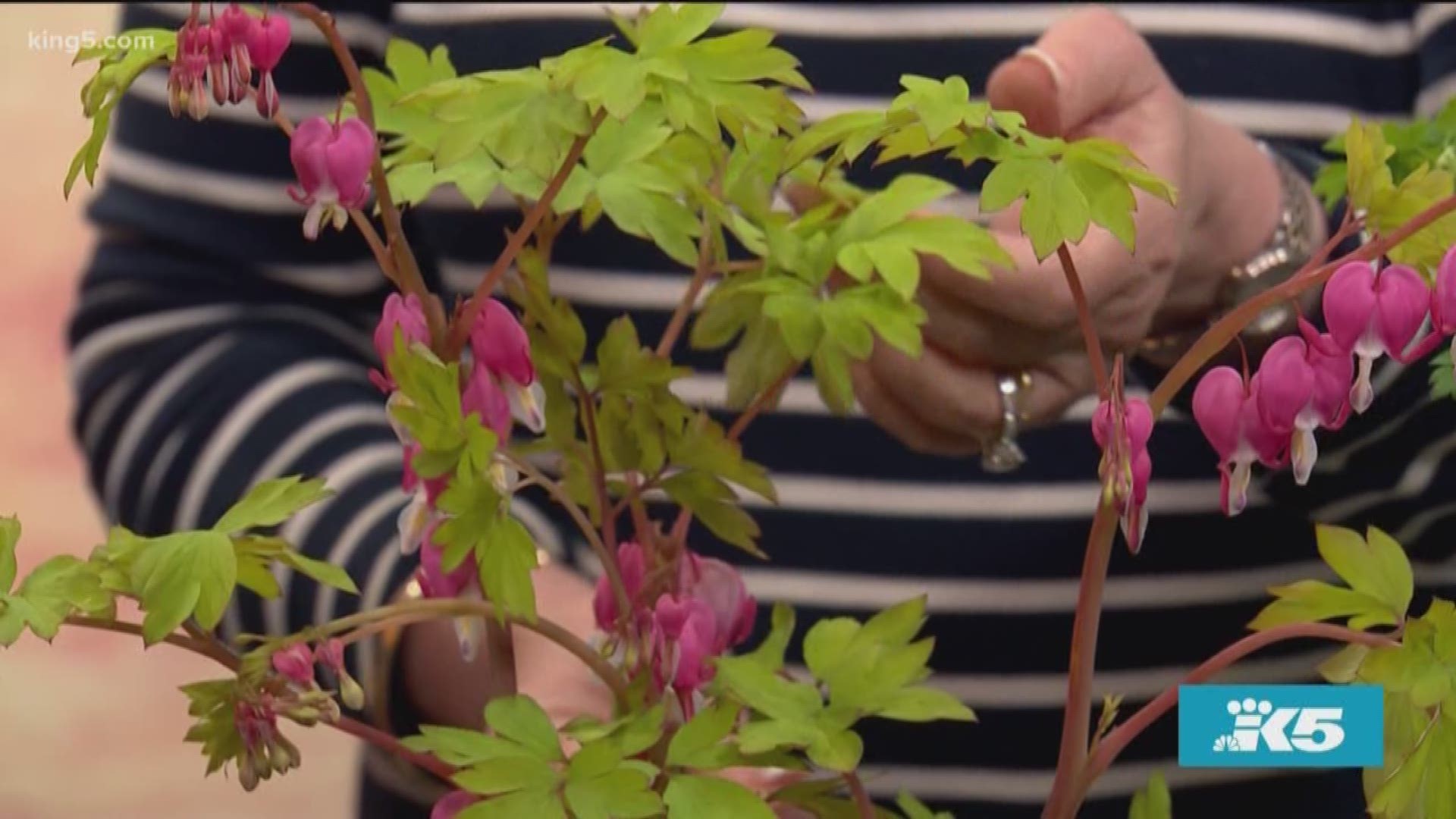SEATTLE — Bleeding Hearts are beautiful spring blooms that attract admiration and hummingbirds to your garden. Gardening guru Ciscoe Morris shows four different types and how to make them flourish in your yard.
Bleeding heart (Dicentra spectabilis) is an old-fashioned looking perennial and a favorite addition in shady areas of my perennial borders. The early spring flowers are a favorite of hummingbirds and will attract the Rufus hummers returning to our area from Mexico and Central America. Preferring moist shade, bleeding heart grows to about 3 ft tall and wide. The soft green leaves and arching stems resemble ferns and contrast beautifully with large leaved plants such as Hosta and Ligularia dentata. With regular watering, most Dicentra foliage will last into late summer, but without irrigation, it begins to deteriorate soon after the flowers fade. Once the foliage begins to decline, there is nothing you can do to reverse the process. Cut the stems down to about an inch from the ground, and plant something to hide the hole left in the garden. Your bleeding heart will return to grace your garden with its fine plumage and beautiful flowers next spring.
Bleeding hearts like to be planted in organic soil in a shady or part shade area, but will rot if planted in heavy clay or poorly drained soils. Work compost into the area before planting and water as necessary to keep the soil somewhat moist. Bleeding hearts can be easily divided by just cutting a section out of the side of the rootball, just as new growth appears in spring.
Warning: Bleeding hearts are poisonous to dogs and kids, so place them where you don't have to worry about kids or dogs eating them.
I showed 4 varieties of bleeding heart on today's show. Although bleeding hearts have been known as Decentra for years, the botanical name is now Lamprocapnos spectabilis. Bleeding hearts are in the poppy family Papaveraceae, and are native to Siberia, northern China, Korea and Japan.
Lamprocapnos spectabilis: This is the classic species. The green foliage resembles a fern and can reach over 3.5 feet tall. The flowers are pinkish red.
Lamprocapnos spectabilis 'Gold Heart': This old-fashioned Bleeding Heart has been a garden favorite for years. It's a substantial plant that bears long, arching racemes of pink flowers. 'Gold Heart' is a classic beauty with one marvelous variation: It has metallic gold leaves and peach-colored stems instead of the usual green. This one does best in morning sun that brings out the gorgeous golden color.
Lamprocapnos spectabilis 'Alba': White Bleeding Heart makes a stunning addition to the shade or moon garden, with pure white, heart-shaped blooms that hang from arching, pale green stems. A classic choice for brightening dark areas, plant them with ferns, hostas, and other textural shade plants that will set off their delicate blooms.
Lamprocapnos spectabilis 'Valentine': A new favorite of mine, this new outstanding selection features arching spikes of elegant cherry-red, heart-shaped blooms with white tips held on dark burgundy stems. Blooms late spring to early summer. The delicate ferny foliage matures to an attractive powdery grey-green.
These are some of my favorites, but there are lots of other wonderful varieties to choose from. Don't forget to wear your hardhat for all of those rufous hummingbirds they'll attract!
Happy spring!
Ciscoe
Watch New Day Northwest 11:00 weekdays on KING-TV Ch.5 or streaming live on KING5.com. Connect with New Day via Facebook, Twitter, Instagram.

